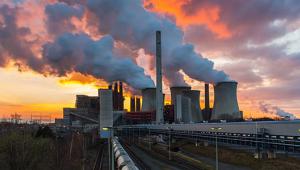Intended Nationally Determined Contributions (INDCs) are the climate action plans set by national governments. The UNFCCC said they should deliver a cost-effective and substantial slowdown in emissions growth, making a no more than 2°C rise both possible and affordable.
The 21st conference of the UNFCCC, or COP21, starts place in Paris on 30 November with the aim of developing a new international agreement on the climate to keep global warming below 2°C.
Christiana Figueres, UNFCCC executive secretary, said: “INDCs represent a clear and determined down-payment on a new era of climate ambition from the global community of nations. Fully implemented these plans together begin to make a significant dent in the growth of greenhouse gas emissions.”
The UNFCCC report captures the overall impact of 119 separate INDCs from 146 parties to the UNFCCC, with groups such as the European Union representing a single party. They include all developed nations and three quarters of the developing world, accounting for 86% of global green house gas emissions.
It found that if fully implemented the INDCs will bring global average emissions per capita down by as much as 8% in 2025 and 9% by 2030.
All national plans deliver largely similar emission levels in both years and mark an important advance on previous commitments, with the potential to slow emissions by a third between 2010 and 2030.
The INDCs have the capacity to limit the temperature forecast to 2.7 degrees by 2100, which is “by no means enough” but a lot lower than the four, five, or more degrees of warming projected by many prior to their inception, Figueres said.
She added that successful climate action achieved not only low emission but a range of other economic and social benefits and provide an “inspiring part of what will become the Paris package”.
However, Giza Gaspar-Martins, chair of the Least Developed Countries Group which are among those most vulnerable to climate change, said the UNFCCC's analysis highlights the “urgent need to address the lack of ambition” within nationally determined plans.
He said: “The current plans will only slow emissions to a third, which is clearly not enough to keep us within safe limits. Governments must do more in Paris, but the work does not end there. For the INDCs to succeed they must be adjusted before 2020 and reviewed in five year cycles to ensure national actions quickly and rapidly progress, otherwise we will all face a grim and uncertain future.
“The current plans to mitigate green house gas emissions do not keep us even within a temperature rise of 2°C. However from the [least developed countries’] perspective it is far worse than that. For 48 of the world's poorest and most vulnerable countries, economic development, regional food security and ecosystems are at risk in this 2°C ‘safe zone’. So once again we call on the world to grow its ambition to a 1.5°C target.”













